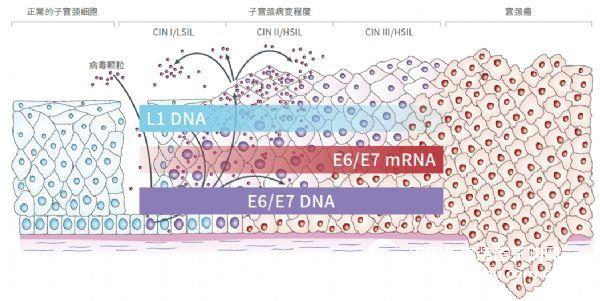At present, there are many HPV (human papillomavirus) detection products on the market. There are more than 100 kinds of products approved by the State Food and Drug Administration (CFDA). The detection methods are various. According to the detection target and the type of detection, the test results will also be It is different.
HPV genome
HPVs are double-stranded small DNA viruses with 7900 base pairs consisting of a viral protein coat and core DNA material without an envelope. The viral gene component is divided into three parts: the early gene region (E), the late gene region (L), and the long regulatory region (LCR) that separates the early region from the late phase. The regulatory region mainly regulates the transcription of the virus and controls the production of viral proteins and infectious particles. The early regions encode E6, E7, E1, E2, E4 and E5 proteins, which are mainly involved in the replication and transcription of viral DNA. The late region encodes the L1 and L2 proteins, which are the major and minor capsid proteins of the virus, respectively. The early expression genes E6 and E7 are oncogenes, which encode viral oncoproteins and play a crucial role in cell transformation and maintenance of the malignant phenotype of transformed tissues.
Detection target
In the current detection methods, there are three main types of follow-up detection targets: L1 DNA, E6/E7 DNA, and E6/E7 mRNA. The difference in detection between different targets is shown in the following figure:

Fig. Trends in the amount of different targets during cervical lesions
In the CIN I phase and before, HPV is mainly present in the host cell in a free state. During the further development of the lesion, the HPV genome integrates into the host cell genome. As the degree of lesion increases, the HPV genome eventually exists in an integrated state. After integration occurs, L1 DNA is usually lost, and E6/E7 DNA persists regardless of whether the virus is in a free state or in an integrated state. Carcinogenic E6E7 mRNA is also expressed in large amounts after integration of the genome.
It can be seen that using the L1 gene as a detection target will lead to missed detection due to HPV genome integration; and using E6/E7 mRNA as a detection target will delay the detection window, which is not conducive to the early monitoring of HPV infection.
Target comparison
The HPV genome is integrated during the progression from low-grade lesions to cancer. During the integration process, the E6/E7 gene persists and the L1 gene may be lost. In the high-grade cervical lesions, the L1 gene may be lost due to the integration of the genome. Therefore, the detection of the L1 gene may have a potential for missed detection of HPV. Conversely, if the detection target is designed for the E6/E7 gene, HPV-positive patients can be detected regardless of whether the HPV genome is integrated. If E6/E7 is detected, all cancers, including L1 lost cancer, can be found. Therefore, it is best to use the oncogene E6/E7 as a detection target to avoid missed detection.
Most of the current CFDA-certified products are DNA testing products, as well as mRNA testing products. It has been shown in the literature that mRNA detection is less sensitive than HPV DNA detection, but the specificity is better. Overall, these studies have shown that HPV E6/E7 mRNA is positive, and patients are more likely to develop lesions [5]. However, mRNA detection is mainly for 14 high-risk types of detection. After detection of positive, it is often necessary to perform further typing tests. In addition, the guidelines issued by several major international cervical cancer authorities are aimed at different types of treatment after HPV DNA testing, and there is no treatment guidance for positive mRNA detection. Therefore, we must be cautious when choosing HPV mRNA detection products.
In conclusion, compared with L1 DNA and E6/E7 mRNA as detection targets, detection of E6/E7 DNA can ensure sensitivity and specificity while avoiding missed detection, and is more suitable as a target for HPV detection.
Shanghai Chuangsai Technology has excellent performance, interleukin cytokines, fetal bovine serum, electrophoresis equipment scientific instruments, raw material drug standards, chemical reagents, cell culture consumables, Shanghai Chuangsai, mass products special promotions, welcome to inquire!
Bringing a sleek and modern element into your home that embraces the virtues of nature is easy with this contemporary fountain. The design celebrates the cosmopolitan decor while the relaxing, gentle water falls help to bring in a natural element. The softly lit bowls add to the luxurious feel and look.
A modern look with a relaxing vibe, our indoor-outdoor fountain is a wonderful combination of contemporary design mixed with natural elements.
The fountain provides tranquil and meditative sound of flowing water, creating a calm atmosphere.
Fountain and Waterfalls, Bubbler Water Fountain, Waterfall Fountain Decor, Fountain with LED Light
HISMOK(SHENZHEN)TECHNOLOGY CO.,LTD , https://www.fzwilltrade.com